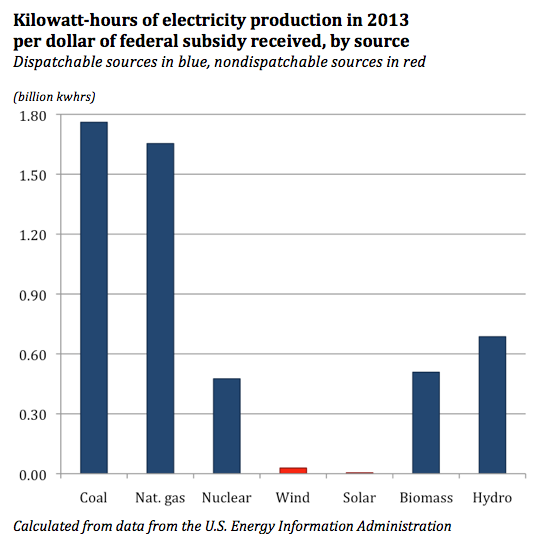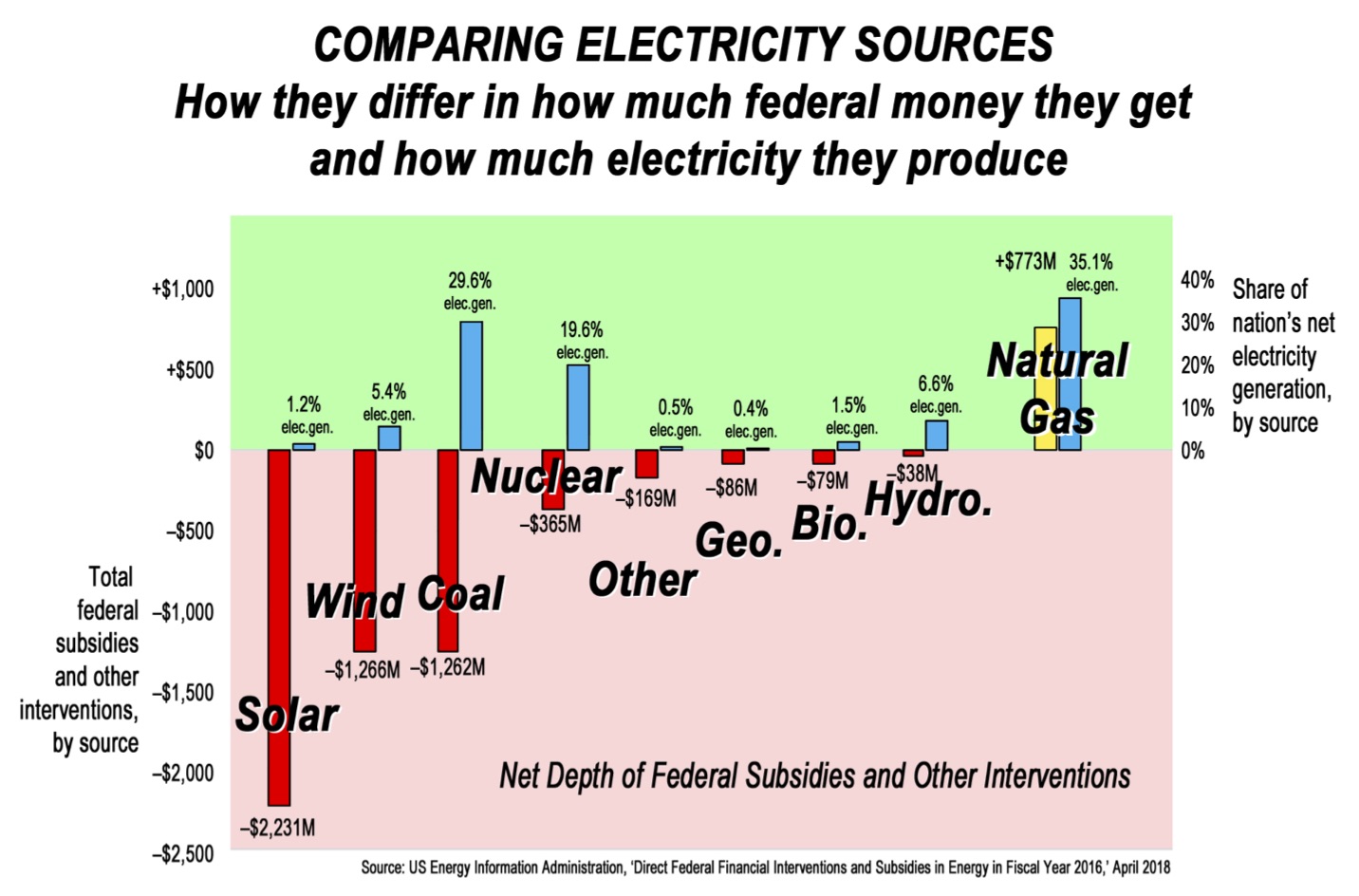Dan Way wrote in Carolina Journal this week about nuclear power advocates seeking to be recognized — in order to get state subsidization — for being a clean energy source. Nuclear is indeed a zero-emissions source, plus it’s dispatchable and incredibly efficient, and environmentalists know it, which is why it’s strange they’re not its most ardent advocates.
Given, however, that nuclear advocates are rent-seeking and trying to get a leg up on its chief competitor, natural gas, by getting state help, I decided to revisit something I’ve written about earlier. As I put it then,
First, it is not the case — as is sometimes asserted — that traditional energy sources (coal, natural gas, nuclear) are more subsidized than renewable energy sources. The cardinal opposite is true. Renewable sources are subsidized at several levels greater than traditional sources (see the following graph).
I provided several graphs. These two show the difference in federal subsidization by energy source and in electricity generation they provide after all that public assistance:


I had prepared merely to revisit those graphs, but I decided to check with the U.S. Energy Information Administration to see if there were any new data. There are. They change the story even more.
Natural gas is no longer a net subsidy-taker
Because now there is an energy source that isn’t on the public dole. Would it surprise you to learn it’s the source that nuclear is worried about?
Here, in a rather inartful chart (which I hope to make prettier later), are how different energy sources compare in federal subsidy levels and electricity generation:
You can click the chart for a larger version. Here are some findings
- Solar energy received $2,231 million but produced only 1.2% of the nation’s electricity (that works out to an infinitesimal 0.02 kilowatt-hours (kWh) per dollar of subsidy)
- Wind energy received $1,266 million but produced only 5.4% of the nation’s electricity (for 0.17 kWh/$)
- Coal received $1,262 million, but it did produce nearly a third (29.6%) of the nation’s electricity (for 0.96 kWh/$)
- Nuclear received $365 million and produced about one-fifth (19.6%) of the nation’s electricity (for 2.19 kWh/$)
- Natural gas was “negative” 773 million for energy subsidies received (natural gas received $111 million in direct expenditures and $56 million in research and development, which were dwarfed by a $940 million liability in tax expenditures), and on top of that produced the largest share (35%) of the nation’s electricity
Epilogue
The rise of cheap natural gas through the fracking revolution has brought about three major societal changes Americans desperately wanted in the 2000s:
- American energy-independence
- Cheaper fuel prices
- Lower energy emissions
Those seemed a pipe dream in the early 2000s. They’re reality now, and it’s a reality news media seem determined to ignore, perhaps because these victories weren’t achieved by top-down government policies. They happened through market forces and American enterprise, especially the great technological revolution of hydraulic fracturing.



